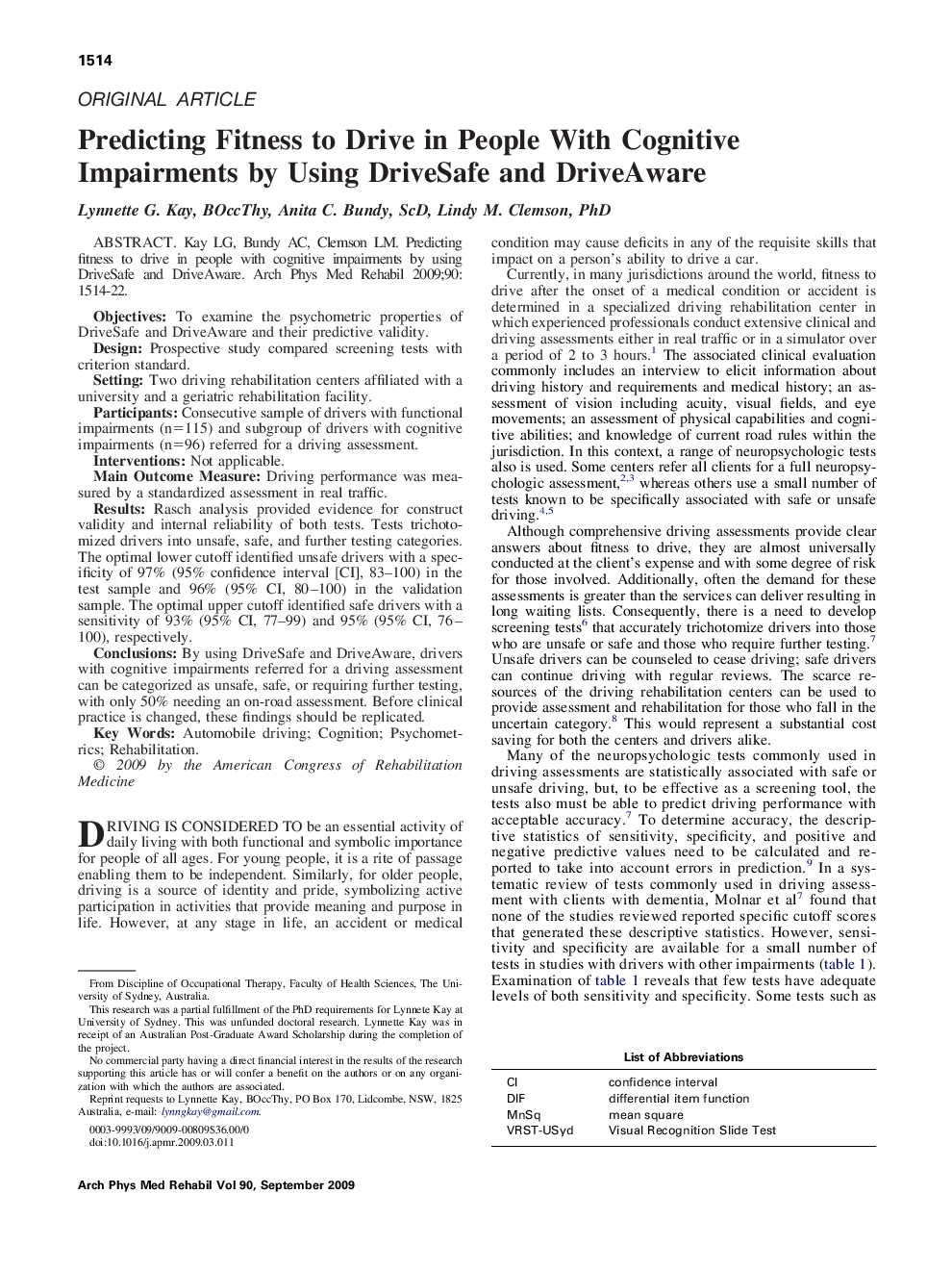| Article ID | Journal | Published Year | Pages | File Type |
|---|---|---|---|---|
| 3451820 | Archives of Physical Medicine and Rehabilitation | 2009 | 9 Pages |
Kay LG, Bundy AC, Clemson LM. Predicting fitness to drive in people with cognitive impairments by using DriveSafe and DriveAware.ObjectivesTo examine the psychometric properties of DriveSafe and DriveAware and their predictive validity.DesignProspective study compared screening tests with criterion standard.SettingTwo driving rehabilitation centers affiliated with a university and a geriatric rehabilitation facility.ParticipantsConsecutive sample of drivers with functional impairments (n=115) and subgroup of drivers with cognitive impairments (n=96) referred for a driving assessment.InterventionsNot applicable.Main Outcome MeasureDriving performance was measured by a standardized assessment in real traffic.ResultsRasch analysis provided evidence for construct validity and internal reliability of both tests. Tests trichotomized drivers into unsafe, safe, and further testing categories. The optimal lower cutoff identified unsafe drivers with a specificity of 97% (95% confidence interval [CI], 83–100) in the test sample and 96% (95% CI, 80–100) in the validation sample. The optimal upper cutoff identified safe drivers with a sensitivity of 93% (95% CI, 77–99) and 95% (95% CI, 76–100), respectively.ConclusionsBy using DriveSafe and DriveAware, drivers with cognitive impairments referred for a driving assessment can be categorized as unsafe, safe, or requiring further testing, with only 50% needing an on-road assessment. Before clinical practice is changed, these findings should be replicated.
